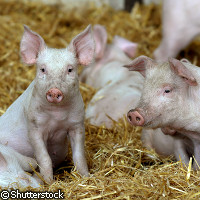EU project sets new standards in animal welfare
A new set of animal welfare measures has been developed by a project called WELFARE QUALITY ('Integration of animal welfare in the food quality chain: from public concern to improved welfare and transparent quality'). The 44-partner consortium from 13 European countries plus Brazil, Chile, Mexico and Uruguay, is funded by the EU with EUR 14.6 million under the 'Food quality and safety' Thematic area of the Sixth Framework Programme (FP6), and runs from May 2004 to the end of 2009. The newly published series of publications sets out protocols designed to accurately assess the welfare of farm animals and provide feedback and support to producers. In addition, the animal welfare ratings provide useful information to retailers and consumers regarding the welfare status of the animals that end up on our plates. The three publications cover cattle, pigs and poultry. Animal welfare and food quality are both of huge importance to EU citizens and standards of animal welfare are now a high priority in the EU. Traceability, the current buzzword, means being able to trace a product from its point of sale to its point of origin - the 'fork to farm' approach. Animal welfare is an integral part of the whole process of producing quality food; high standards of animal welfare are synonymous with top-quality meat and greater resistance to disease in animals. The researchers focused on creating practical strategies for improving animal welfare. The project partners used a scientific methodology to assess current levels of animal welfare on farms and slaughterhouses, and assigned them an animal welfare rating from poor to excellent. Meetings and discussions were held with consumers, farmers, policymakers and other stakeholders. On the basis of these discussions and feedback, four principles for good animal welfare were derived: good housing, good feeding, good health, and appropriate behaviour. These principles were then used to establish a set of 12 criteria for animal welfare standards in 7 livestock types (dairy cattle, beef cattle, veal calves, sows, fattening pigs, laying hens and broilers). Direct observation of the animals concerned was one of the methods used to determine the quality of animal care. For each species studied, around 40 animal-based measures were identified to verify if they complied with the 12 criteria. The system has now been tested on more than 700 farms throughout Europe and in South America. The information obtained from the assessment will be used to assess current levels of animal welfare throughout the EU and will also provide useful information for EU citizens on the provenance of the meat products they buy and the welfare of the animals. WELFARE QUALITY has provided valuable feedback for farmers and food producers, and higher standards of animal welfare may help some food producers move into higher value markets, such as the organic and free range sectors.



